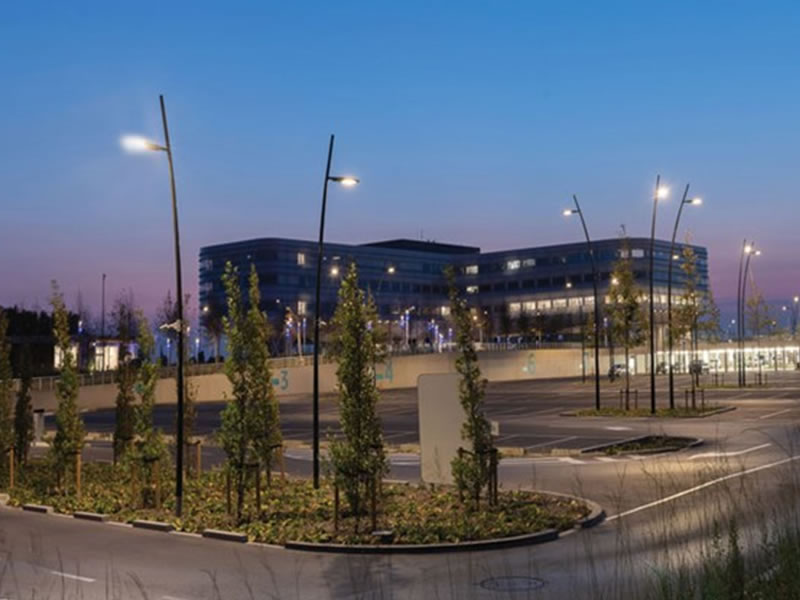
Az Zeno Hospital – Knokke
Innovative and sustainable lighting solution for the hospital of the future
The new AZ Zeno hospital in Knokke was designed to be much more than a state-of-the-art facility – it was built to provide a warm and living environment, close to nature to give patients the chance to heal faster.
The sustainable lighting solution for the grounds had to be subtle, and focused on creating a safe and easy passage for the people using the building.
In 2007, a competition was launched to build a new hospital that would merge Blankenberge and Knokke-Heist hospitals. It was a challenging and ambitious project, with high expectations in terms of innovation and creativity, for both the design and the medical care
The tempoconsortium of Boeckx Architects, Aaprog and B2Ai broke with conventional hospital architecture by proposing an inviting environment where comfort is the key concern.
The building spans over 4 wings. Three of the wings, overlooking the dunes, house the bedrooms for the long and short terms patients. They can take advantage of the large view over the natural landscape, which creates a healing atmosphere. The wing looking over the street and car park, integrates the medical facilities.
Natural light was an important element in the design. It was important that the staff and visitors could take full advantage as much as possible.
This state-of-the-art piece of architecture also needed to take into account the needs of the hospital, it had to efficient and highly functional. It was built so that all of the different functions are immediately visible. The entrance is a large open space that enables patients and visitors to easily find where they need to go to. This simplicity lies in a complex system of movement and organisation behind the scenes, with different passages for the patients and the visitors. This way, bedridden patients never run into visitors.
A sustainable design and construction was integrated from the very start of the project. Firstly, for the insulation of the building, which has a double slab structure to reduce energy consumption by 25%, but also for the different techniques used, like the solar panels, biomass boiler, and the highly-efficient heating systems.
To light the paths and pedestrian areas, they wanted a luminaire that would:
- provide a concentrated light in certain zones
- create an unique atmosphere
- integrate other features.
They chose the Shuffle thanks to its combination of quality light and refined design, which perfectly integrates the landscape. The Shuffle’s modular system also meant that they could play with the height of the columns to create an efficient yet highly original lighting scheme.
This modularity is also ideal for adapting the column to integrate other features such as loudspeakers, cameras or WiFi in the future. Futhermore, the Shuffle can be fitted with a light ring. The architects chose a blue light ring to create a distinctive feature so that visitors could easily spot the entrance to the hospital from a distance.
The Piano, which combines performance with design was chosen to light the car parks and access roads. As people and vehicles use these zones, it was essential that they ensure excellent visibility for a safe environment. It was also important, from an architectural point of view that they perfectly blend into the landscape, including the vegetation.
To enhance security at the drop off zone and bus stop, they decided to integrate SCULPline floodlights into the canopy. This compact floodlight provides an asymmetric light distribution, perfectly adapted to accentuating these areas.
For the architects, the lighting had to perfectly combine energy efficiency and the functional needs with an aesthetic design.
They chose luminaires that consume little energy yet provide the right lighting levels to guarantee safety. Aesthetically, they blend in with the natural landscape and compliment the modern architecture.
Schréder is delighted to have worked on this project and met the challenge of providing efficient, sustainable, modular and innovative luminaires.

